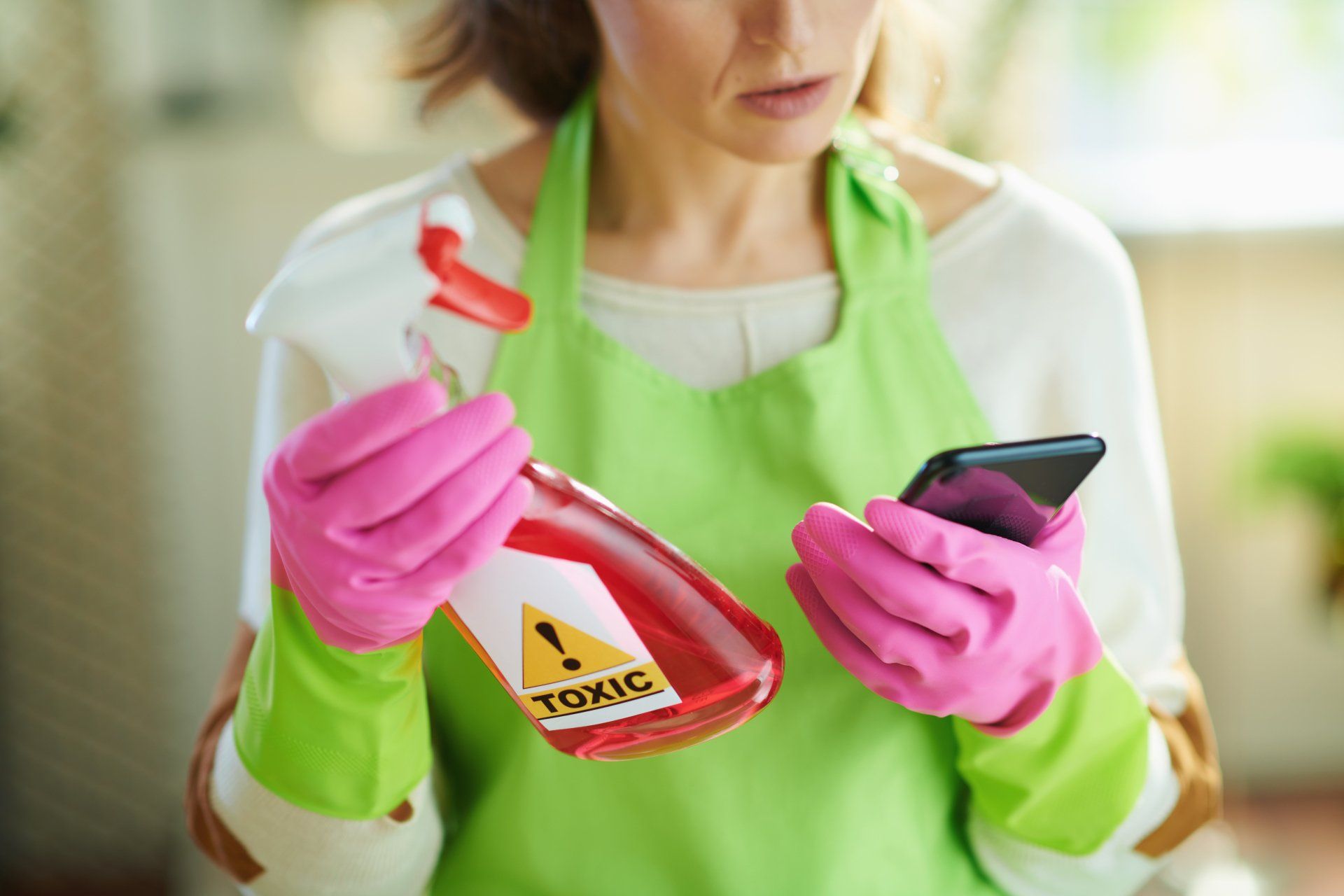How Can Your Business Reduce Ozone Depletion?

As designated by the United Nations, September 16 every year marks International Day for the Preservation of the Ozone Layer. In 2022, the U.N. observed 35 years of the world’s progress in defending the ozone layer against synthetic chemicals. These chemicals can cause damage to the protective ozone layer, and lead to dramatic issues with climate heating.
This worldwide effort to preserve the ozone layer and prevent a global health and environmental crisis is focused on efforts to phase out Ozone Depleting Chemicals. Thanks to this awareness, the UN Environment Programme (UNEP) has found that there has indeed been a substantial reduction in ozone-depleting emissions over the last two decades. There is some evidence currently available that the ozone layer may even be healing itself, and it could possibly recover by the middle of this century.
This is great news for the future of the planet, but these efforts cannot stop now. While countries are making laws that focus on the greater world issues, individual businesses can also do their part by reducing the harmful chemicals they use, and replacing them with sustainable or bio-based alternatives. This article looks at some steps your business can take to help reduce our reliance on Ozone Depleting Chemicals.
Ozone Depletion Impact on the Environment
The ozone layer is a thin shield of gaseous elements that sits about 15-30 kilometers above the earth’s surface. This protective layer absorbs the sun’s ultraviolet (UV) rays, which could be dangerous to all living matter. Unfortunately, centuries of human activity have eroded the ozone layer. Human-made substances such as Ozone Depleting Chemicals, which can be found in many everyday products and solvents, have caused damage to the ozone layer. Depletion of the layer or holes in it can allow more of the harmful UV rays to penetrate through to the earth’s surface.
Long-term exposure to this increased UV radiation can cause cancer and many other health problems for both humans and animals. Many of the Ozone Depleting Chemicals are also potent greenhouse gasses, which can accumulate in the atmosphere and contribute to severe climate change. Some chemicals which have been found to be most dangerous to the ozone layer include:
- Halocarbons such as chlorine, fluorine, iodine or bromine.
- Methyl bromide and methyl chloroform.
- Carbon tetrachloride.
- Nitrous oxide
- Halogenated hydrocarbon
- Families of chemicals including chlorofluorocarbons (CFCs), hydrochlorofluorocarbons (HCFCs), and halons.
These substances can be found in refrigeration and air conditioning equipment, as well as fire extinguishers. Other uses include solvents, aerosol propellants, and blowing agents for insulating foams.
Businesses' Role in Ozone Depletion
Many businesses, such as those in agriculture and industrial manufacturing, unfortunately, contribute to ozone depletion through the ordinary course of their operations. If your business involves cleaning, manufacturing, waste, or processing, there is the possibility that you may be using Ozone Depleting Chemicals. To reduce your role in ozone depletion, eliminate harmful compounds from your operations and use methods that are more environmentally friendly. Some examples of steps businesses can take to decrease their role in ozone depletion include:
- Maximize transportation and operational efficiencies, to reduce energy consumption.
- Allow for telecommuting when possible.
- Check fire extinguishing equipment for active ingredients such as halon, halogenated hydrocarbon, or carbon tetrachloride.
- Eliminate harsh cleaning products.
- Work with local vendors wherever practical.
- Avoid aerosol products with chlorofluorocarbons (CFC).
- Properly dispose of pre-1995 freezers, refrigerators, and air conditioning units.
- Keep machinery and equipment running efficiently.
- Buy lumber, wood products, and plywood that have not been treated with methyl bromide.
- Reduce or eliminate the use of methyl chloroform as a degreaser or adhesive.
- Eliminate materials and solvents containing CFCs or HCFCs.
- Avoid products made with ozone-depleting substances such as aerosol sprays, blowing agents, and cleaning products.
- Support legislation for the reduction of Ozone Depleting Chemicals.
- Increase the use of BioSolvents as an environmentally friendly, high-performing alternative to traditional petroleum-based solvents.

Why a Bio-based Alternative is More Sustainable
Businesses make decisions every day that can harm or not harm the ozone layer. It is to the mutual benefit of the world to look towards safer ways to meet the needs of business. Vertec BioSolvents provides a range of environmentally friendly, high-performing biosolvent alternatives to petroleum-based solvents for agricultural and industrial markets. Our products do not contain any environmentally hazardous ingredients - no Ozone Depleting Chemicals and no hazardous air pollutants (HAPs).
Our bio-based green solvents and solvent blends are derived from corn, soybeans, citrus, and other renewable feedstocks. Many of our solvents are revolutionizing the market for their innovation, technology, sustainability, and applications. These solvents are completely formulated from renewable resources. Our bio-based solvents have a reduced carbon footprint. Replacing petroleum-based solvents with our Vertec BioSolvents has a positive impact on reducing greenhouse gases. Our bio-based alternative products are used across a wide range of industries, including:
- Agriculture
- Paints, coatings, and inks
- Cleaning and degreasing solutions
- Petroleum
- Industrial manufacturing
- Cleaning tank trucks, ISO tanks, semi-bulk bins, reactors, and storage tanks
- Washing printing presses
- Sanitization
Our carefully researched line of bio-based green solvents includes:
- VertecBio™ EL offers a 100 percent biodegradable way to cut through paints, coatings, and inks, making them a high-powered choice for cleanup.
- VertecBio™ ELSOL, a product line that serves as drop-in replacements for existing petroleum-based solvents, including acetone, Isopropyl Alcohol, Butyl Cellosolve, Tetrahydrofuran, Cyclohexanone, MEK, and MIBK.
- VertecBio Gold®, a biosolvent product line that is ideal for graffiti removers, paint strippers, heavy asphalt cleaners, and degreasers.
- VertecBio™ Citrus products, which make excellent cleaners for epoxy, polyurethane, and other resins.
- VertecBio™ DLR, a high-powered, environmentally friendly d-Limonene substitute.
- VertecBio™ 5516, an environmentally friendly solvent, is ideal for cleaning polyurethanes.
- VertecBio™ Bio-Based Ethyl Acetate, our latest addition. This high-performance, 100% bio-derived Ethyl Acetate replaces all applications for petroleum-based Ethyl Acetate.
Proudly made in the USA, Vertec BioSolvents places a heavy emphasis on technology and sustainability. We produce superior performance through sustainable technologies.
Visit our website or call 630-960-0600 for more information, or to request a sample from our line of bio-based,
safe solvents.
Request a Sample
Looking to find the right product for your application?
Request a Sample
Looking to find the right product for your application?
All Rights Reserved | Vertec BioSolvents Inc.
Privacy & Terms


